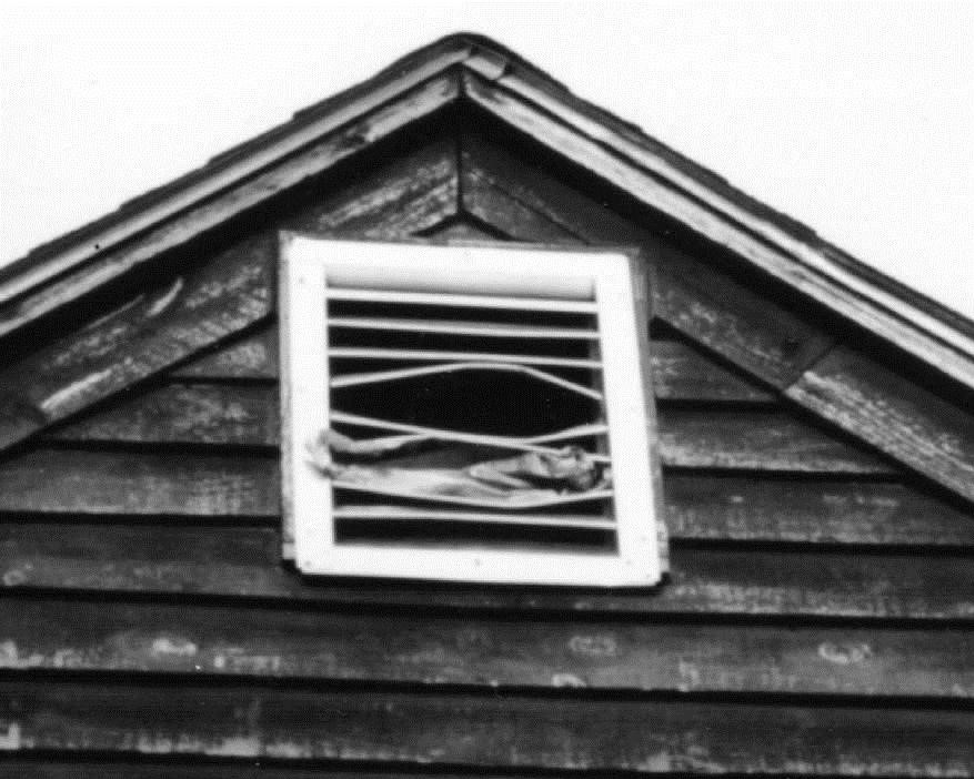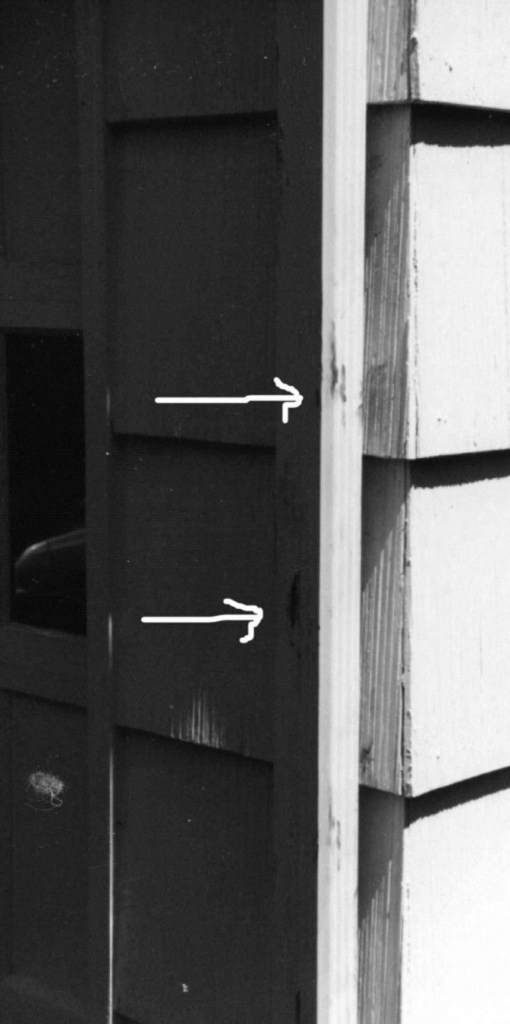Identification | Biology | Damage ID | Management | Handling
Damage to Structures
Raccoons cause damage or nuisance problems around houses and outbuildings when they seek to gain entrance to attics or chimneys, or when they raid garbage in search of food. In urban areas, garbage cans and dumps can be a major source of food. In many urban and suburban areas, raccoons learn that uncapped chimneys make adequate substitutes for more traditional hollow trees for denning sites, particularly in spring. In extreme cases, raccoons may tear off shingles or fascia boards to gain access to an attic or wall space. Raccoons only need a 4-inch gap to enter a space.

A raccoon entered this attic through the vent. Photo by Stephen M. Vantassel. 
Arrows point to smudges indicative of climbing by raccoons. Photo by Stephen M. Vantassel.
Damage to Livestock and Pets
Raccoons occasionally kill poultry and leave distinctive signs. The heads of adult birds usually are bitten off and left some distance from the body. The crop and breast may be torn and chewed, the entrails sometimes eaten and bits of flesh left near water. Young poultry in pens or cages may be killed or injured by raccoons reaching through the wire and attempting to pull the birds back through the mesh. Legs or feet of the young birds may be missing. Eggs may be removed completely from nests or eaten on the spot with only the shell remaining. The lines of fracture normally will be along the long axis of the egg and the nest materials often are disturbed. Raccoons can destroy bird nests in artificial nesting structures such as bluebird and wood duck nest boxes.
Damage to Landscapes
Field crops or gardens near wooded areas may suffer severe damage from raccoons. Raccoons can cause considerable damage to garden or truck crops, particularly sweet corn. Damage to sweet corn by raccoons is characterized by many partially eaten ears with the husks pulled back. Stalks also may be broken as raccoons climb to get access to the ears. Raccoons damage watermelons by digging a small hole in the melon and raking out the contents with a front paw.
Raccoons also roll up freshly laid sod in search of earthworms and grubs. They may return repeatedly and roll up extensive areas of sod on successive nights. This behavior is common particularly in mid- to late summer as young raccoons are learning to forage and during periods of dry weather when other food sources are less available.
Health and Safety Concerns
Raccoons are associated with rabies and raccoon roundworm. The incidence of reported cases of rabies in raccoons and other wildlife has increased dramatically over the past 30 years. This increase has led to more testing, greater awareness, and finding higher numbers of raccoons with the disease. Raccoons recently have been identified as a major host of rabies in the US, primarily due to increased prevalence in the eastern US.
Raccoon roundworm (Baylisasacris procyonis) can cause blindness, brain damage, and death. Raccoons are not the only carrier of this disease, but they are the definitive host. Avoid disturbing feces and items contaminated with feces. See Raccoon Roundworm to learn more about this infection and how to prevent it in humans.